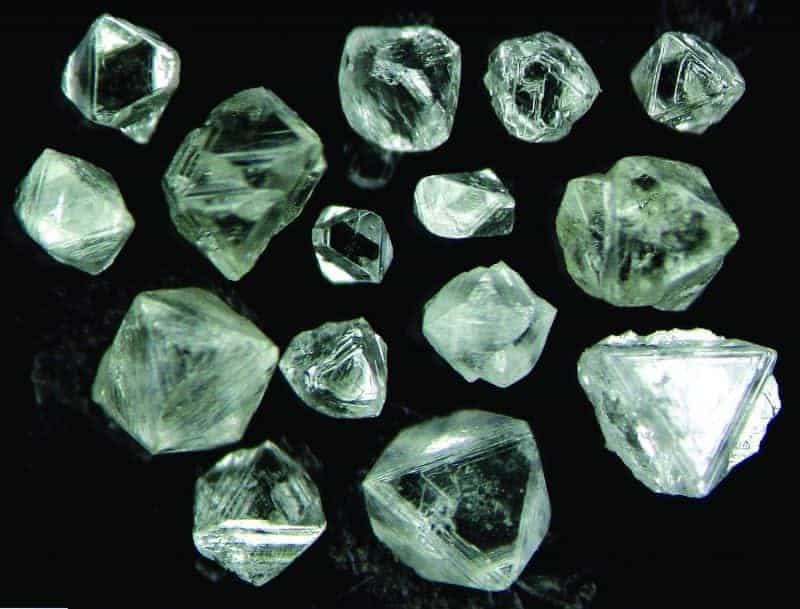De Beers Canada has told the Mackenzie Valley Land and Water Board it intends to prepare a final closure plan for Snap Lake Mine.

photo courtesy of Shear Minerals
Rough diamonds like this are plucked from the Arctic tundra before being cut and polished in Yellowknife.
The diamond company asked on Dec. 14 to skip filing an interim closure and reclamation plan, which would have been due Jan. 30, 2018, and to instead file a final closure plan in 2019.
In his letter to the land and water board, Erik Madsen, general manager of De Beers Canada, writes that the decision to close the mine was “extremely difficult, however has become necessary as the mine remains uneconomic.”
Snap Lake, situated 220 km northeast of Yellowknife, began commercial production in January 2008. The mine was initially supposed to operate for two decades, but was put into care and maintenance on Dec. 4, 2015.
According to the online trade publication mining.com, Snap Lake never turned a profit.
De Beers Canada announced in December 2016 it would be flooding the underground mine.
Flooding "will preserve the long-term viability of the ore body and reduce costs while mitigating environmental risks associated with maintaining dormant operations," the company stated at the time.
De Beers Canada documents filed with the land and water board state the government of Northwest Territories holds a little over $39 million in reclamation security from the company.
According to a De Beers Canada socio-economic report, Snap Lake Mine employed 757 full-time equivalents in 2014, 258 of which were filled by NWT residents.
The company says the $2.2-billion Snap Lake Mine was the first De Beers mine opened outside the African continent, and that it produced 1.2 million carats of diamonds during its lifetime.